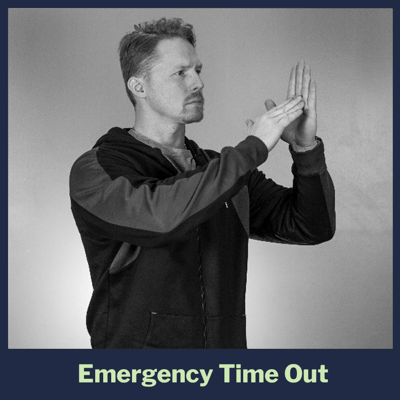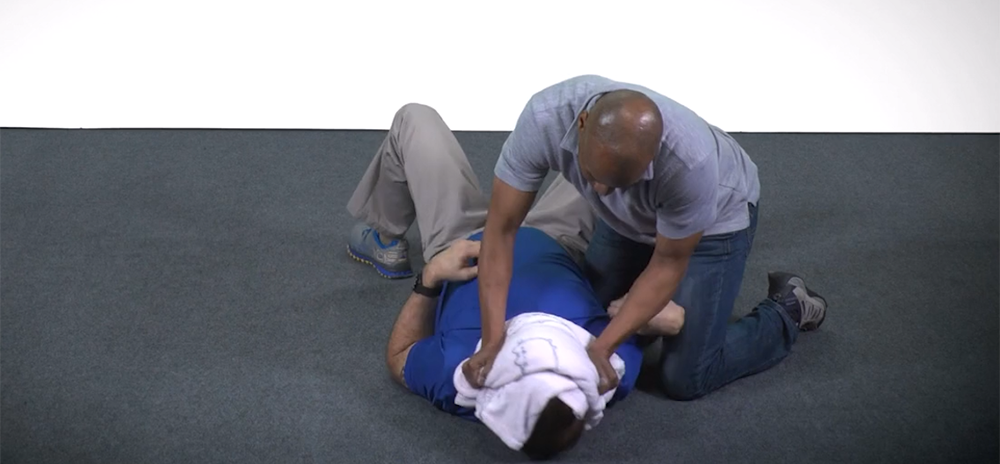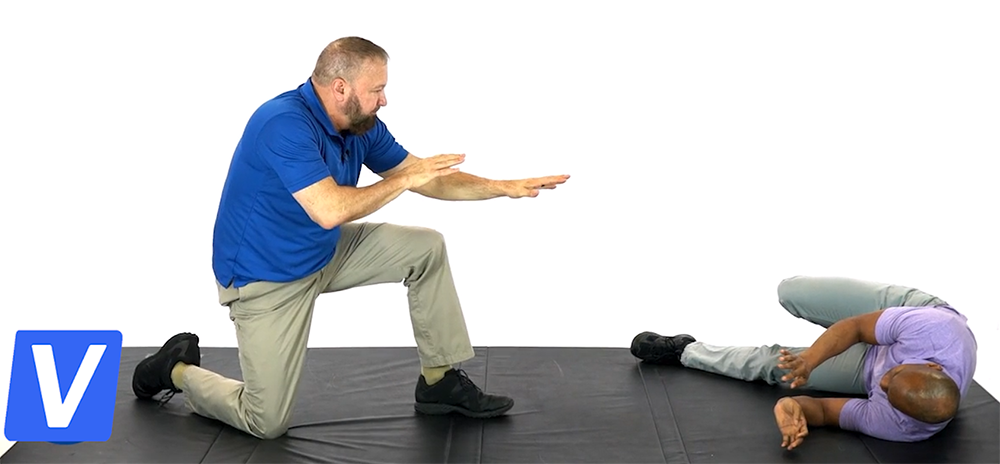The old saying, “You speak volumes before the first word is spoken,” couldn’t be truer! As a personal safety expert and defensive tactics trainer with over 30 plus years of training and experience in law enforcement, corrections and the United States Marine Corps, I have often read assault victim reports, in which when asked what happened, the person shrugs, “I don’t know, he just punched me.”
Then, when you play back the video, you can clearly see that punch coming 30 seconds before the other guy even threw it. For over 30 years, I have been studying human behavior as it pertains to physical encounters, and in the last 5 years, we have highlighted the importance of assessing these basic predictors of behavior during every contact we make. Whether the contact escalates to a physical confrontation or not, these indicators are present and should confirm one of two things; either that communication has broken down, or that there is a possible safety violation.
If communication has broken down, then you need to try a different approach by changing communication strategies. However, if it is a possible safety violation, then you need to exit the area, manage distance and control position, evade, or be ready for physical contact because nothing good is about to happen.
Being someone who has survived several physical encounters both personally and professionally, as well as someone who professionally trains thousands of police, corrections, and military personnel yearly on how to read these signs, I want to share a short list of these predictors, so that you too can add them to your own programs in order to help you manage your contacts.
In our training we use the word Proxemics, which is the management of distance and positioning and proper hand placement. Often, when people are verbally engaged with others, they may not consider how far they are from a person until they are hit in the face. For this, we use a safety rule called “10-5-2.”
At 10-feet, you conduct a visual assessment of your area and the people in it. We call this a Risk and Threat Assessment. In this assessment, you develop an exit plan identifying your escape routes because you never want to place yourself in a situation that you cannot see yourself getting out of. These escape routes can be windows, stairs, a ladder, or even the door you walked in. All your escape options need to be both within your physical and your emotional limits.
If you do not feel the area is safe, we suggest developing exit strategies. An exit strategy is a way to physically avoid contact with a possible threat or dangerous situation by leaving the immediate area. If there are no immediate escape routes, we recommend you identify positions of cover or barriers that you can place between yourself and a threat, especially when a weapon is present.
The last thing in your Risk Assessment is evaluating weapons of opportunity and weapons of availability. Weapons of opportunity are weapons you have on your person, such as a knife, special pen, or a concealed firearm etc. Whereas, weapons of availability are items in your immediate area that you can use to physically defend yourself. Keep in mind, if they are available to you, they are also available to others.
At distances of 10 feet, the respect for Proxemics play a role in safety even before your actual contact. As a person approaches you, you apply a hand gesture stop sign to alert the person you are aware of their presence and are asking them to respect proximity boundaries.
There are many reasons, a person may not respect or honor boundaries as it relates to distance. Some of these reasons are
- Being under the influence
- Suffering from short term emotional issues
- Having brain-based disorders
- Coming from a different culture
- Trying to be aggressive or intimidating
Typically, non-verbal cues can give you an insight to what the person is feeling and thinking. It is important to remember to watch the messages you are sending to others through your non-verbal messages as well. At 5 feet, your awareness of distance, body positioning, and hand placement play a more vital role in ensuring your physical safety.

The equation of hands down = NOT ready to respond, is very true. The important question to ask is, “Are you standing outside of the 5-foot range or inside this range? When you are verbally engaging with a person, and their tone increases or words become threatening, using Proxemics can assist you in improving your communication and increasing your safety without compromising your public image.
If your hands are down by your side, you’re not in the best possible tactical position. A more advantageous stance would be to have your hands up and out in front of you, as shown in the Tactical Thinking Stance. Remember, your contact should have the feeling that you are communicating concern, visually as well as with your tone of voice.
As you get closer to your contact at distances of 2 feet, you are typically engaging with a handshake, retrieving information from them, handing them something, or engaged in physical contact.
retrieving information from them, handing them something, or engaged in physical contact.
Having your hands up in front of you using our Emergency Time Out position, allows you to communicate a message of non-violent intentions and provide you with a position of advantage if you need to respond to a physical attack. This is especially beneficial if someone quickly approaches you from the blind side while engaging with another person.
In most of our contacts as professionals, we have a positive closure, and the situations do not escalate. However, there are times when our contact intensifies into conflict, then to a crisis, and then to possible combat, or as we say in our line of work, it leads into a physical confrontation. There are very distinct signs or “tells” you need to be aware of when you are in these situations.
As a contact professional you must be always assessing our five basic communication and safety indicators:
- Distance – the distance a person allows you to manage during contact speaks loudly about the level of comfort you are extending to them and the level of safety you feel with them.
- Positioning – where a person chooses to stand when verbally engaging you can show either the respect that they are extending to you or the disrespect that are directing toward you
- Tone of Voice and Excessive Repetition (Word Choice) – the tone of a person’s voice is closely related to their level of frustration, and since words are choice, excessive repetition will give you a hint on their level of anger.
- Hand Movement – hand movement will show their ability and readiness to act (kind of like a batter warming up in the batting pen).
- Eye Focus – will give you more insight on their level of focus. What the eyes focuses on is displaying what is in their heart.
A part of distance is the pace in which they change their distance, and the ability to maintain their distance during contact. Before they are standing in front of you, you will be able to gauge their approach. I call this the “initial observation of contact”– we watch as they approach us; the first thing to identify is the pace in which they approach. Speed can determine level of urgency. Are they gradually walking toward you, like taking a stroll at the park? or are they walking in a steady straight line toward you with a purpose as if to ask you a question or tell you something important?
Below are a few categories of pace to consider.
- Casual or Shopping pace – walking in a steady but slow speed with no set time or urgency on their arrival, typically looking at what is in front of them not caring to much of what is around them. If eye contact is made, there is usually no facial expression because you might be in their line of sight but not in their minds eye of purpose or view.
- Strolling pace – walking in a slight pattern and direction typically with no defined goal or purpose however with a destination or time in mind. This is an uneven pace, like 3-5 steps forward causally looking at what is around their immediate area but careless of what is directly in front of them. Their steps are in spurts, and then repeating this strolling pace.
- Targeting pace – walking with a direction and purpose in mind, paying very close attention to what is slightly ahead of them (As if they we looking for a car they parked in the parking lot) They are concentrating on the 10 feet in front of them and very clueless to what going on around them. Their breathing is at a rhythm that matches their steps and their eyes are focused on a specific location.
- Some can refer to this as “Tunnel Vision.” This is when their breathing is not matching their walking pace and speed is much faster than any of the above their eyes are focused directly on you as they walk, possibly bumping into others as they get closer as if they do not see them.
Tone of voice and word choice
The tone of a person’s voice is also a helpful indicator of a person’s state of mind and typically relates to the person’s level of frustration during your contact. The tone of voice a person chooses often can be used to help mask their original feelings or state of mind and focus. Many times, when a person is feeling subordinate to the person they are talking to, they will lower their voice accepting the other person’s dominance. Equally, when they do not feel they are being understood, they will increase the tone of their voice matching their level of frustration.
Since the words we use are a choice, often the word selected, or repetition of a certain word, will highlight anger, either toward you or the situation.
Just moments before a physical act, a person’s tone and level of their voice rises becoming louder than the person they are talking to, and their words become more insulting and threatening.
In our training, we discuss 4 different tones used in law enforcement to assist contact professionals in delivering their message:
- Search Talk – Normal conversational tone used when asking for identification or gathering information from a contact.
- Persuasion – soft, soothing tone used when persuading or negotiating with a person.
- Light Control Talk – insistent tone is used when there is the need to be professional and serious in communicating with a person and providing direction
- Heavy Control Talk – used when issuing ultimatums or giving direct verbal commands
Developed by Daniel Vega, Crisis Intervention Specialist, Michigan Commission on Law Enforcement Standards (MCOLES)
Hand and Arm Positioning and Gestures
The placement and position of a person’s hands can help identify their intended actions. Watching for these non-verbal cues can help you assess if avoidance and exit strategies are needed during a verbal altercation before it escalates into a physical encounter.
- Flexing hands is a way a person demonstrates their levels of anxiety
- Making a fist during contact may be to release some tension or sharing with you an image they have inside their mind
- Bending wrist and cracking knuckles during your contact may be used to express their agitation or used to intimidate
- Clapping their hands together, rubbing them as if to wash their hands may show their tipping or boiling point to act out physically
Eye Focus: Awareness or Contact
Eye focus typically can help you to understand what is on the mind of the person while you are speaking with them; it often can help gauge the person’s truthfulness and intent during a conversation. This is especially so if it is a verbal altercation that is getting ready to enter a physical confrontation.
Where should a person’s eyes be focused when you are verbally engaged with them? Where should a person’s eyes be when words leave your mouth? Below are a few types of eye references and focus you may experience during a contact:
- Casual eye sight– this is referred to someone being in your sight line– your eyes see another person; you see their face but only remember their body shape and possible jacket or hair color, you see what is in front of you without observing what is there in detail.
- Normal eye sight– this is referred to someone being in your sight line and matching a picture you have in your mind – your eyes see another person’s eyes, you see their face and can give a slightly more detailed description of what you see: color and clothes fashion, hair color and how it is styled. They match the picture in your mind through a memory of what you have seen before.
- Targeting eye sight – this is referred to someone being in your sight line—you look longer then needed, so you are able to fill in more detail, such as clothing, hair, eyes, mannerisms, body posture, behavior patterns, type of holster, caliber of firearm, any possible injuries or handicaps.
Remember, “No one has started a fight with anyone and lost it in their mind first!” Just before a person grabs you, hits you, kicks you or assaults you, they will often tell you, and show you. So being aware of the communication and safety indicators is an important element of your safety.
To learn more about our personal protection courses click here.









